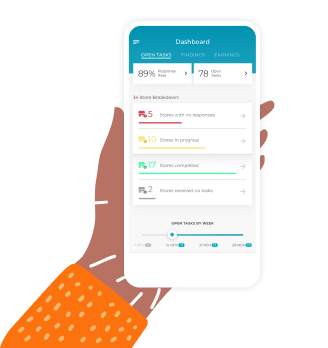My first experience with experiential retail happened before it was even a thing. One of the highlights of my youth was accompanying my parents to Walmart and experiencing the nirvana that came courtesy of the demo gaming consoles in the electronics section. There was no better way to hook me on a game than letting me hold that Nintendo or Sega controller and play it. Experiential retail is rapidly evolving and more popular than ever. Today, Best Buy and Apple model their store experience around this model with “try it displays” that fill every aisle.
Experiential retail may just seem like a new marketing buzzword but it’s more than that. A form of engagement marketing, experiential retail is bridging the divide between digital and brick-and-mortar with personalized experiences. It’s a way to let consumers, quite literally, connect with your brand. Immersive experiences let shoppers examine, touch and interact with products and services. It’s not just about buying it’s about doing. The keywords of experiential retail are innovative, personalized and immersive.
Experiential Retail Shops
American Girl
American Girl, the popular history-themed doll series owned by Mattel, revealed the brand’s 40,000-square-foot New York flagship store at Rockefeller Center this past November. American Girl was already one of the cutting edge leaders of experiential retail, with stores offering classes, doll salon seminars, and in-store demonstrations. The Rockefeller Center flagship is the ultimate in experiential retail for American Girl. Shoppers can design their own doll or outfit and get beauty makeovers right next to their doll in the on-site salon. All of this emphasizes not only bringing your doll for the fun but also purchasing the accessories and items you interact with during your visit. Other American Girl locations around the country offer experiences like field trips, sightseeing tours and even a visit to the musical Wicked.
STORY
Recently purchased by Macy’s this May, STORY is described as a concept store that “takes the point of view of a magazine, changes like a gallery and sells things.” Every 4 to 8 weeks, STORY reinvents it’s entire space around a different theme. This involves redesigning the store and curating items based on that theme. The latest, “Out of Office,” is themed around vacation, summer days and playing hooky. Visitors are treated to displays of journals, beachwear, Instagram-worthy pool floats and more. Previous themes were Love, New York, Fresh, and Home for the Holidays.
Samsung
Samsung 837 is described as a “place filled with ideas, experiences and Samsung’s cutting-edge devices.” The venue is found in New York’s Meatpacking district and is a 55,000-square-foot digital playground where consumers can have state-of-the-art experiences — with Samsung technology, of course. Exhibits include a 4D VR theater, selfie booth, Galaxy fitness equipment, sports simulators and more. Classes and gatherings themed around Samsung products are also featured prominently, with attendees able to learn about the product in question. This month, offerings include Gear-themed fitness classes and Galaxy 8 featured in a food photography class.
Even though the public is already familiar with their products and brand, American Girl and Samsung are choosing to invest in experiential retail offerings because they see the immense value in allowing consumers to experience their products (vs. simply seeing them on a commercial or a billboard). Nearly 6 in 10 respondents to NRF’s 2017 Consumer View report expressed interested in attending special events and experiences offered by retailers. A well designed, curated experience feels more exclusive than a traditional store visit and can leave a lasting impression on consumers. The same report found 79% of respondents said retailer and brand experiences affected where they wanted to shop.
Diving into Experiential Retail
As storefronts and even shopping malls sit empty across the country, experiential retail might be the answer to the so-called “death of retail” as we know it. Retailers are taking advantage of this new chance to connect with consumers, with thousands of store locations offering experiential retail. This form of retail doesn’t have to be available exclusively in grandiose flag ships. In May Google launched a pop-up shop where consumers could play mini golf and interact with Google products throughout the course, learning how Google Home fits within their own homes. Google is currently touring around the country with these pop-ups.
To begin offering experiential retail, you need to look at what your customers like and what your brand offers. With classes, on-site demos, seminars, virtual reality, and plenty of technology at your fingertips, retailers can gain valuable mind-space with modern consumers looking to replace mundane transactional store visits with memorable brand experiences.
If you’re curious about how machine learning can help improve store operations, read more here or here.


